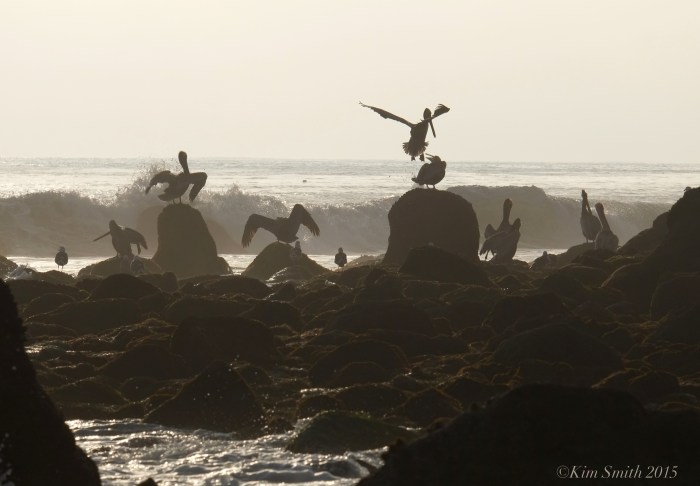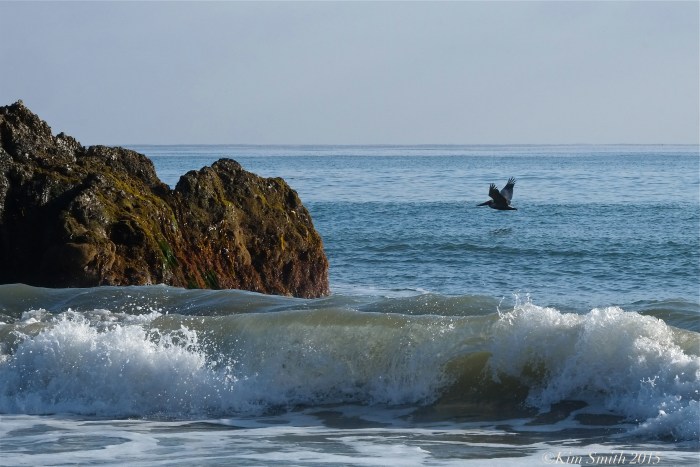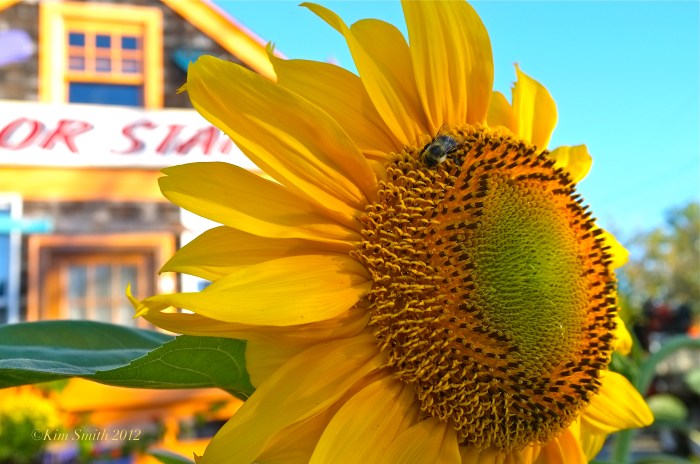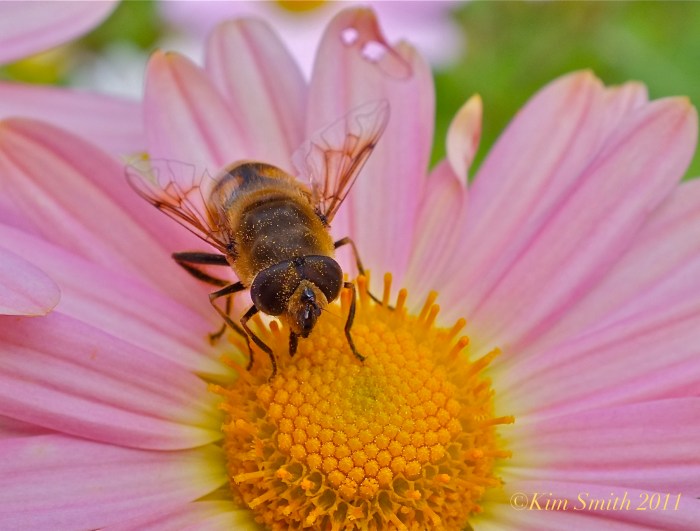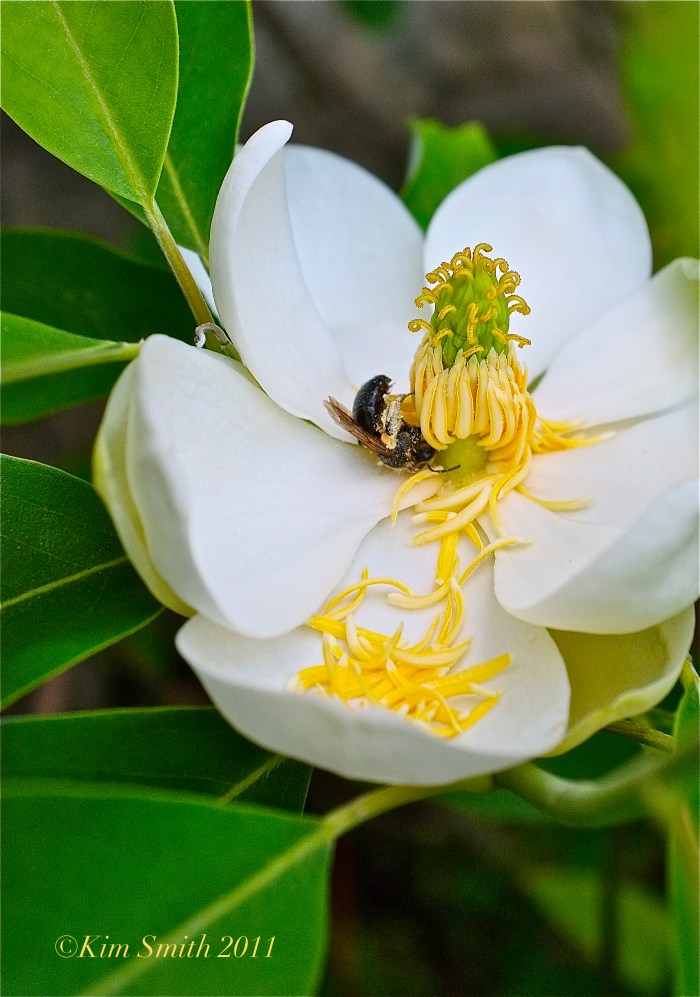When I was a young girl my family lived in Southern California for several years. I recall seeing few, if any, brown pelicans at our local beaches. Due to the widespread use of DDT in agriculture, brown pelicans on both the east and west coasts, along with other species of birds, were made nearly extinct. Pelicans incubate their eggs with the skin of their feet, essentially standing on the eggs to keep them warm. DDT caused thinning of the eggshells and when the pelican parents stood on the eggshells, the shells fractured and broke.
Preening Pelicans ~ You can tell that these two are young pelicans because their eyes, usually brown, turn blue during courtship.
During the 1960s brown pelican colonies along the Southern California coast had shrunk by more than 90 percent. For decades, a chemical plant had been discharging thousands of pounds of DDT into Los Angeles sewers. The toxic chemical was ingested by anchovies and other fish consumed by pelicans. The chemical altered the pelican’s calcium metabolism, which caused them to lay eggs with thinner shells. DDT-caused shell thinning also exterminated peregrine falcons in the east, and took a terrible toll on bald eagles and ospreys.
Insulation: After deep diving for fish, pelicans perch on rocks and preen. Pelicans feather’s keep them warm and dry; they do not actually get wet thanks to the oil in their preening gland. The glands secrete oily waxes and fats that they work into their feathers making them wind- and weatherproof, as well as providing insulation from the cold.
As a direct result of Rachel Carson’s seminal book Silent Spring, in 1972 DDT was banned nationwide. The brown pelican has recovered ground and was delisted from the federally endangered species in 2009. Unfortunately, after DDT was banned, two years later Monsanto brought to market their glyphosate herbicide Round Up.
Brown Pelican Habitat ~ El Matador State Beach
While visiting Liv and Matt, we spotted pelicans everywhere and it was absolutely wonderful to see. They are magnificent birds with an extraordinary life story. Here are several links to learn more about the California brown pelican:
About Pelicans, California Brown Pelicans
Today the lobster industry faces several major threats. Not only are the lobsters stressed from warming ocean waters and a protozoan parasite, but several pesticides used in massive mosquito spraying, including methoprene, malathion, and remethrin are linked to contributing to the collapse of the lobster fishery in the waters off Connecticut and New York. Lobsters are arthropods, which places them in the same phylum classification as mosquitoes and may help explain why they are affected. Lobster landings on Long Island Sound are of particular concern as they have declined from 3.7 million pounds in 1999 to 142,000 pounds in 2011.
Bearing in mind that worse chemicals are often used after specific chemicals are banned, the Maine Lobsterman’s Association is somewhat reluctant at this point to endorse banning specific pesticides until more comprehensive testing is done.
Gloucester lobsterman follow strict conservation guidelines. It would be very interesting to learn what they consider are the reason(s) for the declining population of lobsters in fisheries further south.
Overkill: Why Pesticide Spraying for West Nile Virus May Cause More Harm Than Good

